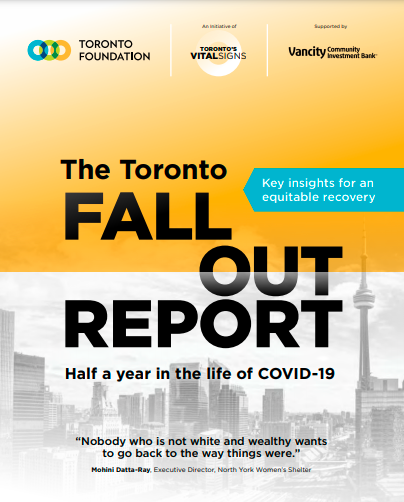
The MINA Project
Bridging the skills, opportunities, and network gaps for equity deserving youth.
We challenge inequalities and systemic barriers faced by racialized and underserved youth
Hear below from past students from our 2021-22 pilot about their experience with the Inspiring Work program. Learn about some of the opportunities, skills development and support provided.
SUPPORT FOR PROJECT DEVELOPMENT
The MINA Project aims to break down systemic barriers to equitable economic opportunity and disrupt the current educational and employment ecosystems.
CANADA’S FIRST STATE OF YOUTH REPORT
As barriers continue to rise, career aspirations dwindle and student debt increases, there is a pressing need to address the variety of challenges youth are facing in finding employment.
BARRIERS TO EMPLOYMENT
Youth face many barriers that hinder their access to employment such as a lack of access to technology, professional networks and career development opportunities. Youth that come from low-income or marginalized communities are disproportionately impacted by these barriers.
“If you do not have a strong network its harder to have access to certain opportunities.”
CAREER ASPIRATIONS
Youth expressed a need for stability, work-life balance and relevant work experiences. However, given how challenging it is to find an entry-level job, youth are not able to envision their potential career options.
“If I wanted more of a casual job, I could probably get one. A career seems to be a whole different type of situation, just because I don’t actually have any college, job, or university experience.”
Learn how The MINA Project can support the Ontario 2022-23 Catch Up Plan through our Inspiring Futures Program. This tailored program can help prepare students for the jobs of tomorrow by connecting them with the world of work, expanding their awareness of opportunities in Science, Technology, Engineering, and Math and so much more!
- An inclusive workforce can help build a more resilient city.
FINANCIAL CONCERNS
Youth are missing out on career development opportunities that are volunteer and/or unpaid.
“A lot of the job building opportunities aren’t paid, which prevents a lot of people from succeeding in their field.”
The Toronto Fall Out Report Key Findings
• Recent post-secondary graduates are facing grim employment and financial realities.
• Lifelong learning and skills upgrading will play an important role in the economic recovery.
• The youth unemployment rate tripled to its highest level ever and is remaining persistently high for BIPOC youth
• Unemployment rates for racialized people are almost twice as high as for non-racialized individuals, speaking to the importance of allocating funds to BIPOC-led organizations working in this space.
• Only 18% of the largest Toronto non-profits are BIPOC-led compared to 38% of the smallest organizations.
OUR LEADERSHIP
The MINA Project Steering Committee has been intentionally and thoughtfully brought together to be reflective of the diverse communities we aim to serve.
Of survey respondents:
90% BIPOC
30% Immigrants
80% Grew up in single family homes
90% Female identifying
10% Refugees
40% Grew up in low income families
10% LGBTQ+
30% First generation Canadian
Race or Ethnic Group
SOCIAL IMPACT
The MINA Project programming aligns with four of the 17 United Nations Sustainable Development Goals.
The Inspiring Futures program is built on evidence-based programming done in the UK (Education and Employers and Organisation for Economic Co-Operation and Development OCED) that resulted in elementary aged students broadening their horizons and forming positive attitudes towards school.
The Inspiring Work program was established based in part on the World Economic Forum Jobs Report 2020 listing soft skills that are required to help youth become successful in the workforce.
Inspiring Futures programming will help advance gender equality critical to all areas of a healthy society, from reducing poverty to promoting the health, education, protection and the well-being of girls and boys by introducing female leaders in industries typically dominated by males to break down gender stereotypes.
Inspiring Work programming is committed to gender equality ensuring female identifying participants comprise 60% or more of each cohort.
Providing youth the best opportunity to transition to a decent job calls for investing in education and training, providing youth with skills that match labour market demands, as well as levelling the playing field so that all aspiring youth can attain productive employment regardless of their gender, income level or socio-economic background.
The Inspiring Work program helps to provide these opportunities by creating work-integrated experiential learning and internship opportunities.
Inequality threatens long-term social and economic development, harms poverty reduction and destroys people’s sense of fulfilment and self-worth. Both Inspiring Futures and Inspiring Work programs focus on providing opportunity to marginalized youth from underserved communities, helping create opportunities to those that will benefit them the most. These economic opportunities are provided in the hopes of helping to alleviate poverty by disrupting educational and employment environments.
TESTIMONIALS
“I am speechless. This is a program that my students can really benefit from. I already have some students in mind.”
— N. F. Secondary School Social Worker
“This sounds like such an impactful program, especially when starting at the elementary school stage. There is nothing like this program that I have seen in my 20 years of teaching.”
— C. S. TDSB Elementary School Teacher
“Impressive and much needed. Helping improve economic and life outcomes of marginalized youth. This program is what equity in action looks like.”
— J. J. Elementary School Social Worker








